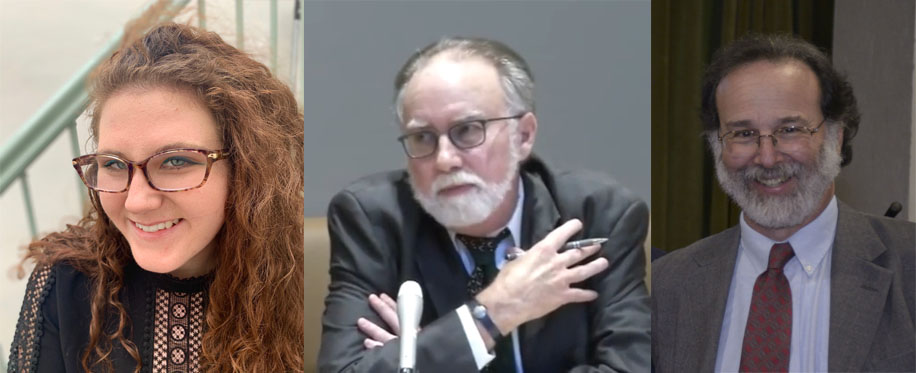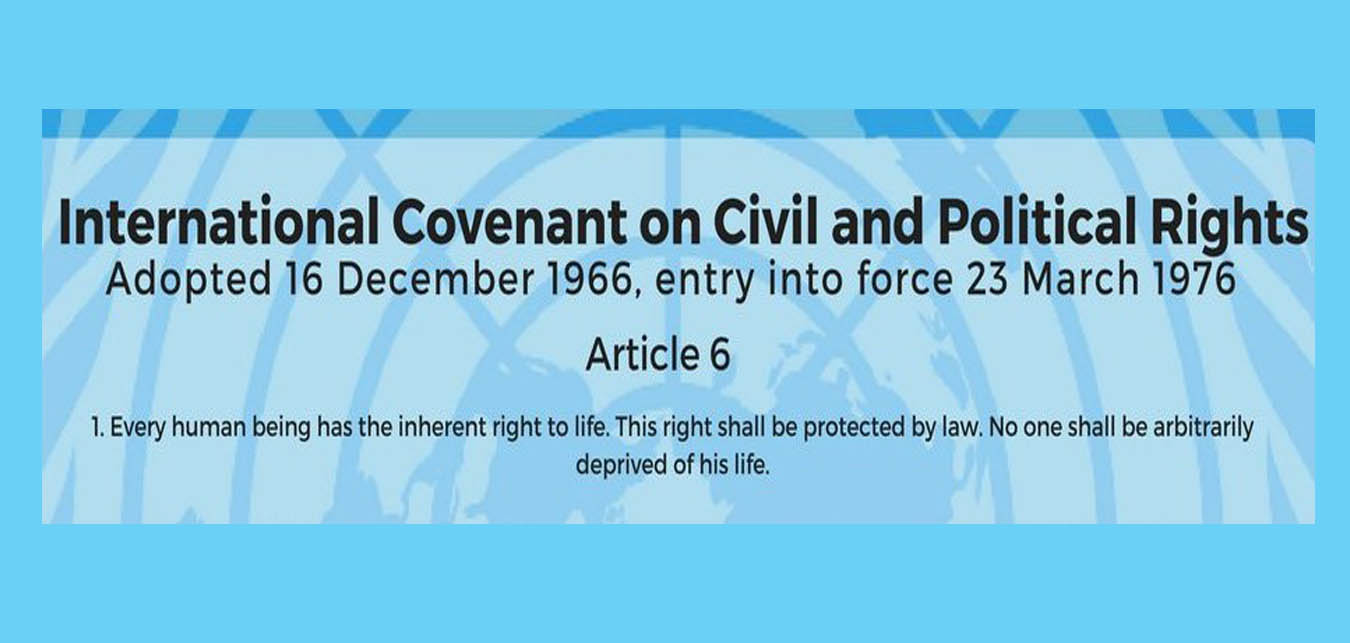Recent developments in human rights law can support civil society nuclear disarmament campaigns and help ignite change, according to three legal experts presenting in a workshop of A Nuclear-Weapon-Free World, a civil society global forum held in conjunction with the International Day for the Total Elimination of Nuclear Weapons on September 26, 2020.
One of those developments is the affirmation by the UN Human Rights Committee in October 2018 that: ‘The threat or use of weapons of mass destruction, in particular nuclear weapons, which are indiscriminate in effect and are of a nature to cause destruction of human life on a catastrophic scale, is incompatible with respect for the right to life and may amount to a crime under international law.’
‘This is a very powerful statement,’ asserted John Burroughs, Senior Analyst and former Executive Director of the Lawyers Committee on Nuclear Policy (LCNP), in his presentation to the Nuclear-Weapon-Free World Forum. ‘It carries forward the finding of the International Court of Justice (ICJ) that use of nuclear arms is “scarcely reconcilable” with international humanitarian law while lacking the ambiguities of the Court’s 1996 conclusions.’
In addition, the fact that this affirmation by the UN Human Rights Committee derives from the application of Article 6 of the International Covenant on Civil and Political Rights (ICCPR), means that it is applicable to the nuclear armed States, all of whom are parties to the ICCPR, with the exception of China (which signed but has not ratified the convention).
Burroughs notes that this affirmation, found in the UN Human Rights Committee General Comment 36 on the Right to Life, provides a human rights approach to nuclear disarmament which can complement and strengthen other approaches.
‘The human rights lens is a simple and powerful way to communicate the unacceptability of nuclear weapons to the public,’ said Mr Burroughs. ‘It is a basis for connecting with the large and active human rights groups. And it offers a connection to other issues. For example, in the same General Comment, the Committee states an obligation to protect the environment, including the climate, to protect enjoyment of the right to life.’

According to Danielle Samler, LCNP Fellow and another of the speakers in the workshop. ‘Making legal arguments that are rooted in human rights law can be an effective tool to ignite change,’ said Ms Samler in her presentation. ‘The combination of humanitarian arguments and legal reasoning strengthens our appeal in a way that can be particularly effective—especially if we continue to make these legal and humanitarian arguments and make them frequently.”
And according to Andrew Lichterman, Senior Research Analyst of the Western States Legal Foundation and a workshop speaker, the peace and disarmament movement needs to engage with other social justice and environment movements to be effective. In order to do this, ‘human rights law may be most useful. It might provide new ways to understand common themes around which the movements might coalesce. And it may also be terrain where we can learn from other movements.’ (see his presentation)
See below for a full report of the workshop.
A useful resource on General Comment 36 is Nuclear weapons violate the Right to Life: Using UN Human Rights Committee General Comment 36 in grassroots actions and campaigns.
**********************************************
The Right to Life and the Right to Democracy:
Report on workshop on using the law to advance the prohibition and elimination of nuclear weapons.
#wethepeoples2020
Civil society global event on the International Day for theTotal Elimination of Nuclear Weapons, September 26, 2020
This lively workshop delved into the right to life and the right to democracy and their relationship to nuclear disarmament, climate protection, and other global challenges. Speakers were John Burroughs and Danielle Samler of Lawyers Committee on Nuclear Policy (LCNP) and Andrew Lichterman of Western States Legal Foundation (WSLF). Ariana Smith, LCNP’s new Executive Director, served as moderator.
In his remarks (full text here), Burroughs explained an important recent development with respect to the right to life set out in the International Covenant on Civil and Political Rights (ICCPR). In October 2018, the Human Rights Committee adopted a General Comment 36 on the right to life set out in Article 6 of the Covenant. The comment contains an excellent paragraph, para. 66, on nuclear and other weapons of mass destruction. Its first sentence states:
‘The threat or use of weapons of mass destruction, in particular nuclear weapons, which are indiscriminate in effect and are of a nature to cause destruction of human life on a catastrophic scale, is incompatible with respect for the right to life and may amount to a crime under international law.‘
This is a powerful statement, according to Burroughs. It carries forward the finding of the International Court of Justice (ICJ) that use of nuclear arms is “scarcely reconcilable” with international humanitarian law while lacking the ambiguities of the Court’s 1996 conclusions. The comment’s statement on nuclear weapons also parallels the Treaty on the Prohibition of Nuclear Weapons, adopted a year earlier in 2017.
Other notable elements of the comment that Burroughs discussed include obligations not to acquire, develop, or test nuclear arms and to destroy existing stockpiles; to negotiate the verified elimination of nuclear weapons; and to afford adequate reparation to victims whose right to life has been or is being adversely affected by the testing or use of weapons of mass destruction.
Burroughs outlined advantages of a human rights approach centered on the General Comment:
- The obligations set forth in the comment apply to all ICCPR states parties. That includes states not party to the Non-Proliferation Treaty—India, Israel, Pakistan, North Korea.
- The human rights lens is a simple and powerful way to communicate the unacceptability of nuclear weapons to the public.
- It is a basis for connecting with the large and active human rights groups.
- It offers a connection to other issues. For example, in the same General Comment, the Committee states an obligation to protect the environment, including the climate, to protect enjoyment of the right to life.
Burroughs finally noted that LCNP, WSLF, and Swiss Lawyers for Nuclear Disarmament submitted a joint comment to the review of the United States by the Human Rights Council, and LCNP and WSLF also made a submission to the review of Russia by the Human Rights Committee. While in the near term such submissions may not trigger assessment of states’ records on nuclear weapons by human rights bodies, they will get noticed, including by UN entities and other NGOs.
The second speaker, Andrew Lichterman, offered stimulating and challenging reflections on the role of law in the present “unpredictable moment” characterized by “intertwined crises” of polarization of wealth, the rise of authoritarian nationalism, climate change, and renewed nuclear arms racing. Among his observations (the full text of his remarks is recommended):
The movements we need must bring together work for peace and disarmament with the disparate strands of work against environmental breakdown, polarization of wealth and economic injustice, erosion of democracy, and the targeting of migrants, national minorities, and other vulnerable people. …
It is on this terrain that the more visionary role for law, and particularly human rights law, may be most useful. It might provide new ways to understand common themes around which the movements might coalesce. And it may also be terrain where we can learn from other movements.
In this regard, I would suggest that a useful next step in moving the project of disarmament forward is to focus more on causes: why nuclear weapons still exist, and in sufficient quantities to end our civilization in short order, and who nuclear weapons serve, what elements in society benefit from continuing to wield them.
Approaches grounded in humanitarian law and in the human rights-based right to life focus mainly on the effects of nuclear weapons—the horrific things they do, and the way those effects violate every civilized value. An approach that might allow a stronger focus on root causes, while also providing some common ground with movements confronting other manifestations of civilizational crisis like climate change, would be to explore a more expansive conception of a right to democracy. This means much more than a right to vote, which in many countries affords people only limited choices among narrowly defined elites. It would entail a right for everyone to have an equal voice in decisions that by their nature affect us all.
Finally, Danielle Samler spoke (full text here) about how making legal arguments that are rooted in human rights law can be an effective tool to ignite change. She said that the combination of humanitarian arguments and legal reasoning “strengthens our appeal in a way that can be particularly effective—especially if we continue to make these legal and humanitarian arguments and make them frequently.” Citing the momentum that the Black Lives Matter movement has created, she suggested that highlighting the humanitarian consequences of nuclear explosions and framing the problem in a human rights perspective could generate similar momentum. Taking the nuclear disarmament argument outside of conventional discourse focused on arms control and national security and placing it in a human rights framework prioritizes human security over national security.
Nike Air Max 270
